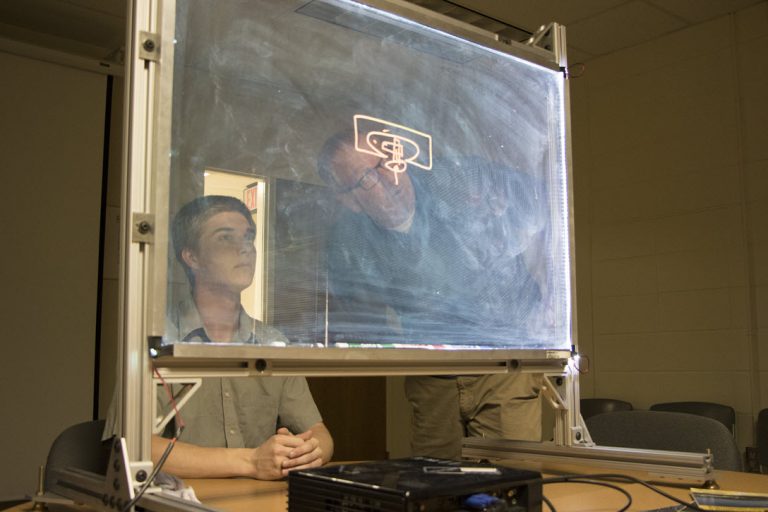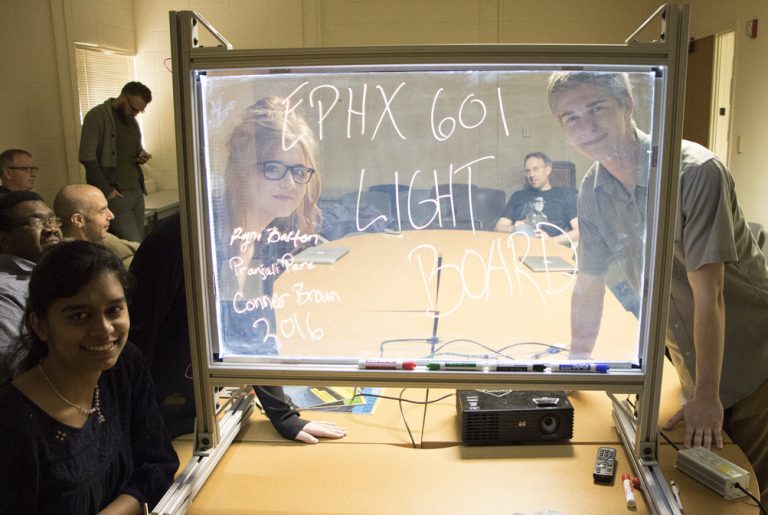Three students in an upper-level physics class designed and built a tabletop lightboard for their final project this semester.
Lightboards are used in creating online videos for classes. They allow instructors to write on a glass pane as they would a whiteboard. A camera is positioned facing the instructor, capturing the writing on the glass as the instructor speaks. The image must then be flipped so that the writing can be read in the video. The approach is especially popular among STEM instructors.

The students – Conner Brown, Pranjali Pare and Kyri Barton – adapted a template from Duke University as they created the lightboard for Engineering Physics 601. KU IT and the Center for Online and Distance Learning financed the project, which cost between $600 and $700, Brown said.
Rows of cool white LEDs line the internal frame of the lighboard. Sheets of low-iron glass – the same kind used in aquariums – aid the illumination. Red, blue and green markers work best on the glass surface, creating a fluorescent image that is easy to see, Brown said. Black markers don’t reflect well.
The students, who worked with Professors Chris Fischer and Michael Murray during the semester, demonstrated the board on Tuesday in Malott Hall. They aren’t sure where it will be set up permanently, but the goal is to make it available to physics faculty for recording class videos.
KU IT is installing a similar but larger lightboard in Budig Hall. It should be ready for use this summer.

Briefly …
Tennessee is the latest state to foolishly allow guns on college campuses. (Kansas will jump into that quagmire next year.) The exclusions in Tennessee’s new law caught my eye. Guns will be prohibited at sporting events and other large gatherings, and at tenure meetings. Yes, tenure meetings. … In a column in the Hechinger Report, Stephen Burd says that public research universities and land-grant colleges give a third of their financial aid to non-needy students. Unfortunately, Burd never explains what he means by “non-needy.” … Sixty-eight percent of 13- to 24-year-olds say they listen to audio on their smartphones every day, Amplifi Media reports. That’s not surprising, but it is worth thinking about as we create online course material for students. …. Far more than their predecessors, today’s college students see higher education as a consumer transaction and a means to high-paying jobs, EAB reports (There was a link, but the page no longer exists).
Doug Ward is the associate director of the Center for Teaching Excellence and an associate professor of journalism. You can follow him on Twitter @kuediting.
Tagged flipped courses, online teaching, teaching and technology, hybrid courses